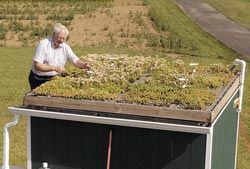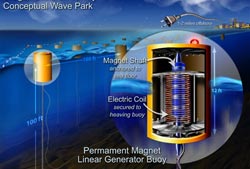



Posted in Uncategorized | Tagged al gore, An Inconvenient Truth, Avatar (2009), China Syndrome (1979), Chinatown (1974), day after tomorrow, disney, Erin Brockovich (2000), FernGully: The Last Rainforest (1992), godfrey reggio, green movies, harold linde, julia roberts, Koyaanisqatsi, pixar, Soylent Green (1973), the 11th hour, wall e, Whale Rider (2003), Winged Migration (2001) | Leave a Comment »
I am proud to say that I am a member of RE Revolution ,the project that has the potential to change the entire dimension of the world. We the students of S4-EC-A have done really well for this. We had an excellent crew who were ready to work till night even after their tiresome day in the college. We conducted meetings regularly and made important decisions regarding the project. I was feeling really great when we worked as a team, cracking jokes occasionally that made the job all the more easy. The satisfaction after doing our work is beyond words. Our leader Anand inspired us to do our work regularly. By doing our works we were able to save many trees and inspired many of our fellow students. If a group of seven can make such a large social impact, I wonder how much we can do if every single person do something to save our mother nature.
-PAUL LEONS
Posted in Uncategorized | Tagged experience, leons, paul | Leave a Comment »
Caring for Mother Nature
“God is in everything, not just in human beings. God is in the mountains, the rivers and the trees, in the birds and the animals, in the clouds, the sun, the moon and the stars. Everything in Nature has a purpose to fulfill. There are no mistakes in God’s Creation. Every creature and every object that has been created by God is so utterly special. How can anyone who understands this want to kill or destroy?” — Amma
 GreenFriends is Amma’s initiative to help us reawaken the awareness of our unity with all of creation and to cultivate an attitude of love and reverence for Mother Nature. All living beings emerge from the same Supreme Consciousness. Mother Nature is the manifestation of that Consciousness. Today we ignore this truth and even destroy that which sustains us.
GreenFriends is Amma’s initiative to help us reawaken the awareness of our unity with all of creation and to cultivate an attitude of love and reverence for Mother Nature. All living beings emerge from the same Supreme Consciousness. Mother Nature is the manifestation of that Consciousness. Today we ignore this truth and even destroy that which sustains us.
Continue Reading »
Posted in Uncategorized | Tagged amma, green friends, MAM, mata amritanandamayi devi, mata amritanandmayi devi math | Leave a Comment »
Make Paper Obsolete
 Imagine curling up on the couch with the morning paper and then using the same sheet of paper to read the latest novel by your favorite author. That’s one possibility of electronic paper, a flexible display that looks very much like real paper but can be reused over and over. The display contains many tiny microcapsules filled with particles that carry electric charges bonded to a steel foil. Each microcapsule has white and black particles that are associated with either a positive or negative charge. Depending on which charge is applied; the black or white particles surface displaying different patterns. In the United States alone, more than 55 million newspapers are sold each weekday.
Imagine curling up on the couch with the morning paper and then using the same sheet of paper to read the latest novel by your favorite author. That’s one possibility of electronic paper, a flexible display that looks very much like real paper but can be reused over and over. The display contains many tiny microcapsules filled with particles that carry electric charges bonded to a steel foil. Each microcapsule has white and black particles that are associated with either a positive or negative charge. Depending on which charge is applied; the black or white particles surface displaying different patterns. In the United States alone, more than 55 million newspapers are sold each weekday.
Bury The Bad Stuff
 Carbon dioxide is the most prominent greenhouse gas contributing to global warming. According to the Energy Information Administration, by the year 2030 we will be emitting close to 8,000 million metric tons of CO2. Some experts say it\’s impossible to curb the emission of CO2 into the atmosphere and that we just have to find ways to dispose of the gas. One suggested method is to inject it into the ground before it gets a chance to reach the atmosphere. After the CO2 is separated from other emission gases, it can be buried in abandoned oil wells, saline reservoirs, and rocks. While this sounds great, scientists are not sure whether the injected gas will stay underground and what the long-term effects are, and the costs of separation and burying are still far too high to consider this technology as a practical short-term solution.
Carbon dioxide is the most prominent greenhouse gas contributing to global warming. According to the Energy Information Administration, by the year 2030 we will be emitting close to 8,000 million metric tons of CO2. Some experts say it\’s impossible to curb the emission of CO2 into the atmosphere and that we just have to find ways to dispose of the gas. One suggested method is to inject it into the ground before it gets a chance to reach the atmosphere. After the CO2 is separated from other emission gases, it can be buried in abandoned oil wells, saline reservoirs, and rocks. While this sounds great, scientists are not sure whether the injected gas will stay underground and what the long-term effects are, and the costs of separation and burying are still far too high to consider this technology as a practical short-term solution.
Let Plants and Microbes Clean Up After Us
 Bioremediation uses microbes and plants to clean up contamination. Examples include the cleanup of nitrates in contaminated water with the help of microbes, and using plants to uptake arsenic from contaminated soil, in a process known as phytoremediation. The U.S. Environmental Protection Agency has used it to clean up several sites. Often, native plant species can be used for site cleanup, which are advantageous because in most cases they don’t require pesticides or watering. In other cases scientists are trying to genetically modify the plants to take up contaminants in their roots and transport it all the way to the leaves for easy harvesting.
Bioremediation uses microbes and plants to clean up contamination. Examples include the cleanup of nitrates in contaminated water with the help of microbes, and using plants to uptake arsenic from contaminated soil, in a process known as phytoremediation. The U.S. Environmental Protection Agency has used it to clean up several sites. Often, native plant species can be used for site cleanup, which are advantageous because in most cases they don’t require pesticides or watering. In other cases scientists are trying to genetically modify the plants to take up contaminants in their roots and transport it all the way to the leaves for easy harvesting.
 It’s a wonder that this concept attributed to the Hanging Gardens of Babylon, one of Seven Wonders of the World, didn’t catch on sooner in the modern world. Legend has it that the roofs, balconies, and terraces of the royal palace of Babylon were turned into gardens by the king’s order to cheer up one of his wives. Roof gardens help absorb heat, reduce the carbon dioxide impact by taking up Co2 and giving off oxygen, absorb storm water, and reduce summer air conditioning usage. Ultimately, the technique could lessen the “heat island” effect that occurs in urban centers. Butterflies and songbirds could also start frequenting urban garden roofs, and like the king’s wife, could even cheer up the inhabitants of the building. Here, a green roof is tested at Penn State.
It’s a wonder that this concept attributed to the Hanging Gardens of Babylon, one of Seven Wonders of the World, didn’t catch on sooner in the modern world. Legend has it that the roofs, balconies, and terraces of the royal palace of Babylon were turned into gardens by the king’s order to cheer up one of his wives. Roof gardens help absorb heat, reduce the carbon dioxide impact by taking up Co2 and giving off oxygen, absorb storm water, and reduce summer air conditioning usage. Ultimately, the technique could lessen the “heat island” effect that occurs in urban centers. Butterflies and songbirds could also start frequenting urban garden roofs, and like the king’s wife, could even cheer up the inhabitants of the building. Here, a green roof is tested at Penn State.
Harness Waves and Tides
 The oceans cover more than 70 percent of the Earth’s surface. Waves rncontain an abundance of energy that could be directed to turbines, which can then turn this mechanical power into electrical. The obstacle to using this energy source has been the difficulty in harnessing it. Sometimes the waves are too small to generate sufficient power. The trick is to be able to store the energy when enough mechanical power is generated. New York City’s East River is now in the process of becoming the test bed for six tide-powered turbines, and Portugal’s reliance on waves in a new project is expected to produce enough power for more than 1,500 homes. Here, a buoy system capable of capturing the oceanes power in the form of offshore swells is illustrated by researchers at Oregon State University.rn
The oceans cover more than 70 percent of the Earth’s surface. Waves rncontain an abundance of energy that could be directed to turbines, which can then turn this mechanical power into electrical. The obstacle to using this energy source has been the difficulty in harnessing it. Sometimes the waves are too small to generate sufficient power. The trick is to be able to store the energy when enough mechanical power is generated. New York City’s East River is now in the process of becoming the test bed for six tide-powered turbines, and Portugal’s reliance on waves in a new project is expected to produce enough power for more than 1,500 homes. Here, a buoy system capable of capturing the oceanes power in the form of offshore swells is illustrated by researchers at Oregon State University.rn
Posted in Uncategorized | Tagged Bioremediation, electronic paper, Energy Information Administration, wave power | Leave a Comment »
Laptops Going Green
By making some simple decisions, you can help your environment. You can go green with your computers and laptops. This could be done by selecting laptops, which are eco friendly, and runs long. The latest green laptops or notebooks take the concept of eco friendly notebook computer to the next level. Although green laptops are smaller than the ordinary laptops but still they last longer on a single charge. The best part about these green laptops is that they completely abide by all almost all the environmental rules and regulations.
Continue Reading »
Posted in Uncategorized | Tagged eco friendly, green laptops, harmless components, laptop skin, smaller carbon footprints | Leave a Comment »
Are you going green?
You will be able to notice many ads on TVs or buses regarding the people who are going green. But what actually does going green means?
 You can go green by many ways. In fact, going green is one of the simplest topics. Most of the people will be doing many things for going green, but they would not have realized that.
You can go green by many ways. In fact, going green is one of the simplest topics. Most of the people will be doing many things for going green, but they would not have realized that.
So, which are the ways you think will be quite helpful to our environment? Let us find out the things that we might want to do or we might be already doing, without realizing that it is helpful for environment too apart from us.
Continue Reading »
Posted in Uncategorized | Tagged change, global warming, go green, go green movement, pesticides, sustainable energy resources | Leave a Comment »
What is recycling? As we begin this blog, I thought I might start with the basics and begin with a working personal definition of recycling. Recycling as a word has become so ingrained into our language and to a certain extent, in the very fabric of our multi-cultural society. It is extremely encouraging to note the steady increase of solid waste recycling in the India, over the last 4 decades.
What is recycling?
“Reduce, reuse, recycle” is the mantra we often hear everytime there’s a discussion about recycling . Reducing waste means not only to reduce the volume of waste that goes to the landfills, but it also means decreasing the amount of dangerous chemicals that seep into the soil and pollute the air due to improper waste disposal. Reuse is basically extending the usage of most of the items we have in the house by reusing or donating these items to others in a free recycle group, for example. To complete the cycle, we must do it as part of our lifestyle to purchase and use products made from recycled materials.
Continue Reading »
Posted in Uncategorized | Tagged economic benifits, national recycling coalition, recycle, reduce, reuse, revolution | 2 Comments »
information supplied by: National Recycling Coalition
|
|
|
|
|
|
|
|
|
|
|
|
|
|
|
|
|
|
Posted in Uncategorized | Tagged economic benifits, national recycling coalition, recycle, reduce, reuse | 4 Comments »
Recycle
Reuse
The three RE’s that are going to shape and concrete the platform of the future world. When we scrutinize the present allocation of our resources, it is quite shocking to find that to what extent will we be able to live without trouble. Yes friends the population grows each second, but the resource vanishes in each of those seconds. The nature pleads, but man never cares.
We the youth is the hope. Believing on the famous words-“Affirm it, visualize it, believe it and it will actualize itself”, we the students of Amrita Vishwa Vidyapeetham, s4 ECE A batch launch the ‘RE Revolution’ , a small step to a giant leap.
Posted in Uncategorized | Tagged Amrita Vishwa Vidyapeetham, CCR, CIR, project, re, recycle, reduce, reuse, revolution | Leave a Comment »